Hey welcome back. Let's do something exciting. Let's start on a new type of building block. So far we have been writing letters pretty much the same order as in English and you might have wondered why I fuss so much about drawing charts. But now we will do something new.
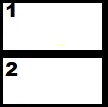
Let's look at the vowel o:
ㅗ When it stands at the beginning of a syllable and there for gets the 'O' it looks like a little tree. All the rules that I told you about filling in box 1 and box 2 (see Lesson 1) are still valid, even if the boxes are now aligned differently.
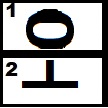
오 = o
Btw o is the sino-korean word for five.
The u (pronounced 'oe' in shoe looks almost the same but it is upside down. ㅜ So when together with O, they don't touch.
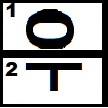
우 = u (oe)
Why do we suddenly need a different building block? It is the vowels which determine the format. All the vowels we have seen in Lesson 1 and 2 ( a, i, e (ay), ae, aw) always go to the right. O and u (oo) always go beneath.
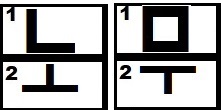
How do we read this now? Up left- down left- up right - down right. (just follow your numbers and read one block after the other from left to right.
That gives us here Block 1 slot 1: no consonant, slot 2: o; Block 2 slot 1: m, slot 2: u = nomu = tree
Let's give it another try.

Block 1 : 라 = ra - Block 2: 디 = di Block 3: 오 = o
라디오 = Radio
Not to difficult, is it? Let's try some more words.
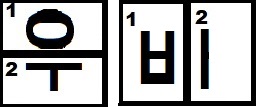
Block 1: 우 = u - Block 2: 비 = bi
우비 = ubi = raincoat
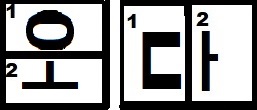
Block 1: 오 = o - Block 2: 다 = da
오다 = oda = to come

mu = radish (a vegetable)
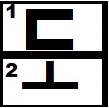
도 = do = also
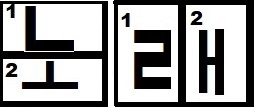
Block 1: 노 = no - Block 2: 래 = rae
노래 = no-rae = song
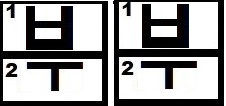
Block 1: 부 = pu - Block 2: 부 = bu (remember b at syllable start = p, but in the middle of a word = b)
부부 = pu-bu = married couple
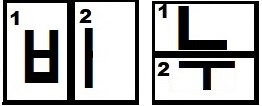
Block 1: 비 = pi - Block 2: 누 = nu
비누 = pi-nu = soap (remember i is prounounced like English ee I didn't feel like writing pee-noe)
Let's do one last:
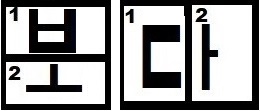
Block 1:보 = po - Block 2:다 = da (we read it da and not 'ta', because we know it is the middle of our word, but otherwise this block by itself would read 'ta'.)
보다 = po-da = to see
See you in the next lesson.
tto pwa-yo (See you)
